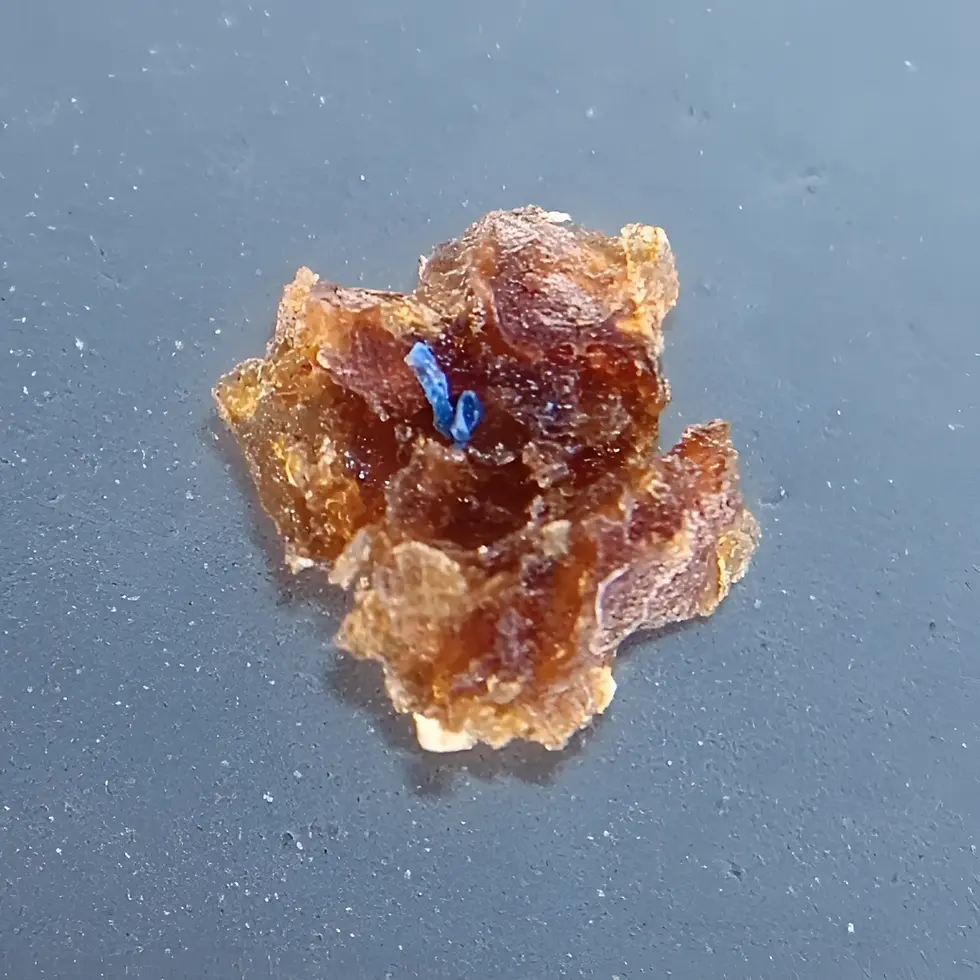Majority of potable water microplastics are smaller than 20 µm - So why not test for them?
- Oskar Hagelskjær

- Jan 20
- 3 min read
Updated: Mar 25
The majority of microplastics found in drinking water are smaller than 20 µm - the detection limit suggested by the EU Directive 2020/2184.
This is no surprising discovery, but it is surprising that the EU would chose to neglect the inclusion of microplastics below 20 µm in forthcoming legislations. We wondered why and therefore, attempted to analyze this fraction in ten different brands of bottled water and one tap water sample - the purpose of this study was not so much to determine quantities, but rather to demonstrate that analysis of the 1-20 µm fraction is feasible (Fig. 1). That's why we only tested one tap water sample for example - and why I emphasize that it is risky to make too many conclusions about the microplastic content in the tap water of the Toulouse Metropole area!
You can read our study, published in PLOS Water, right here.

I have no doubt that the capable EU microplastic reserachers who developped the suggested methodology, decided to set the threshold at 20 µm with positive intent - and there are many reasons why one would chose to do so. Namely, that analyses can be performed by Fourier Transform Infrared (FT-IR) spectroscopy. And FT-IR has many advantages compared to the alternative, i.e. Raman spectroscopy, such as lower acquisition time (debatable) and unsusceptibility to fluorescence.... Which can be an issue with Raman.... However, FT-IR suffers from an intrinsic detection limit of between 15-20 µm (some claim 10 µm but this is also debatable).
Generally, drinking water is a clean matrix in terms microplastic content and therefore (as the EU microplastic researchers were well aware of), it would require a lot of analyte (in this case 1000L of water was decided upon) to amass a statistically significant number of microplastics for FT-IR analysis, or any analysis of microplastics >20 µm.
On the other hand, if one were to apply Raman microscpectroscopy to analyze microplastics from 1 µm of 1000L of water, the filter would likely be completely saturated. In our study, we analyzed 4.5L of water per sample and in 10 out of 11 samples the measured microplastic content was above the contamination background (the procedural blank) (Fig. 2). It probably would make sense, though, to have analzyed 10L of each. However, this is still 100 times less analyte to be processed.... Which makes many of the pre-treatment steps considerably easier... And easier to maintain in a 'microplastic-free' environment.

However, admittedly, it is an advantage that by setting the detection limit at 20 µm, it is possible to analyze the entire surface area of the filter (thus the entire sample), whereas, when analyzing particles from 1 µm, you are forced to subsample what corresponds to 2-6% of the filter surface - and then extrapolate - which introduces uncertainty and even prolongs the analysis time...
The question remains though, whether it's worthwhile analyzing microplastics in drinking water while omitting the 1-20 µm size fraction, when it's broadly accepted that (especially) microplastics below 10 µm have the highest implication for human health.
Microplastic detection analysis in drinking water
Microplastic Solution conducts analysis of microplastics in drinking water including, particles down to 1 µm. If you are producing and selling drinking water (either private or state-owned), you may be interested in determining the microplastic concentration in your water and potentially earning Microplastic-Free Certification status (Fig. 3).

On the basis of our results, particularly, the 'Microplastic-Free Container' certification is of interest to bottled water producers, as the polyethylene terephthalate (PET) concentration in most bottles, was 'surprisingly' low compared to other polymer types - this is indicative that the bottles themselves, do not necessarily shed microplastics into the drinking water they are storing. If however, it turns out that your bottle does shed microplastics into the product, we can assist you in selecting a container that is less susceptible to fragmentation and/or help modify your production protocol to minimize microplastic contamination in the drinking water overall.
If you are interested in learning more about our analysis service, click here and/or reach out to us - We'd be happy to discuss.
Oskar Hagelskjær
Founder and CEO Microplastic Solution




Comments